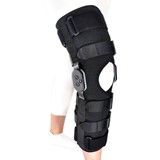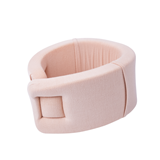However, with so many options available, it can be challenging to choose the right one for your needs. In this comprehensive guide, we will discuss different types of knee braces, how they can prevent and treat injuries, and factors to consider when selecting a knee brace for running.
Different Types of Knee Braces for Various Injuries:
One size does not fit all when it comes to knee braces. There are four main types of knee braces available, each designed for specific injuries:
- Bands and straps: These are suitable for runners with patellar tendonitis, knee pain, or chronic knee pain. They provide comfortable and effective pressure to the knee, helping to relieve discomfort.
- Braces for compression and sleeves: These can help ease pain and aches from mild to moderate arthritis and knee pain. They distribute weight-bearing burden, enhance capability to perform during training and sports, and reduce discomfort from daily movement.
- Wraparound designs: These offer bracing solutions for moderate to mild joint pains, patellar instability, and dislocations. They are easy to remove and adjust for maximum ease of use and protection for your knees.
- Hinged knee braces: These provide greater support but less mobility. They are ideal for people with severe knee injuries that require additional support and stability, such as ACL, PCL, and MCL ligament tear.
Knee Braces Are for Injury Prevention as Well as Treatment:
Knee braces can also assist runners in preventing typical running injuries, such as meniscus tears, MCL tears, knee sprains, IT band syndrome, and runner’s knee. Prevention is related to strengthening and stabilizing the knee, either by strengthening the areas surrounding the knee or by utilizing knee supports to give additional support and artificially strengthen the knee joint and its surrounding structures.
Factors to Consider When Choosing the Right Knee Brace for Running:
Selecting the ideal knee brace can be a daunting task, so consider the following factors before making a purchase:
- Prices: Knee braces range from affordable to expensive. Determine your budget and the type and style of knee brace that best suits your needs.
- User ratings: Look over the ratings and reviews of previous buyers to determine if the claims made are verified.
- Breathability: Ensure the fabric is light and breathable for optimum ventilation.
- Mobility: Consider whether you need a brace that limits mobility or one with an open patella for maximum flexibility.
- Support: Determine the amount of knee support that you require from the knee brace.
- Compression: Decide on the level of compression that you need, whether fixed or adjustable.
- Special conditions: Consider the reason you need the knee brace, whether to prevent injury, relieve knee pain, or treat an injury.
Conclusion:
Choosing the right knee brace for running can be a challenging task. However, understanding different types of knee braces, their uses, and factors to consider can help you make an informed decision. By taking the time to choose the right knee brace, you can help prevent injuries and enjoy your running experience to the fullest.

















